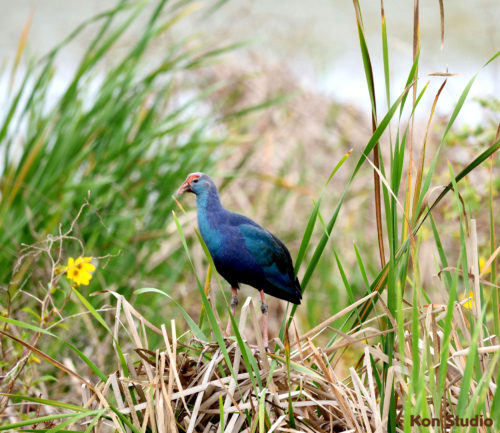Gray-Headed Swamphens, (Porphyrio poliocephalus). are big and lovely colored marsh birds that originated in Asia and are believed to be a subspecies of the Purple Swamphen from Southern Europe to Southern Africa and New Zealand. Males average 2.3 lbs. and females average 1.9 lbs. Gray-headed Swamphens have dark shiny indigo feathers with a red bill. Although they vary in color, they generally have dark green, brown, or black plumage on their wings and back, and their breast and heads are pale blue to gray in color, giving them their name.
The Swamphen is thought to have been established in Florida since the 1990s. They are believed to have arrived in the state as imported captive birds, that escaped after Hurricane Andrew in 1992 in and around the area of Pembroke Pines. They are now commonly found in ponds, lawns, golf courses, and marshland in the Southeastern area of Florida in the thousands. This one was photographed at Lake Apopka Wildlife Drive.
Female Swamphens will lay a clutch of 3-7 eggs during a breeding season, however, multiple females may share the same nest. The eggs are usually a tan or beige color with dark brown spots. Both the male and the female incubate the eggs which will hatch in about 3 weeks. The hatchlings are fed by the adults for several weeks but will begin to search for food on their own after just a few days after hatching.
The Swamphen’s diet consists mostly of seeds of aquatic plants, plant roots, leaves, and stalks. It predominantly feeds on Spikerush in Florida. The Gray-headed Swamphen also will eat some insects, frogs, snails and has been known to forage human food when accessible.
Swamphens forage by wading along the water’s edge, in shallow marshes or wet fields, by climbing into marsh vegetation, or while swimming. It often will stand on one foot while using the other foot to grasp plant material while feeding.




